Initial registration date : 2021.09.12 |
Date of final update : 2024.09.12 |
 428
428A travel destination where the history and culture of Incheon coexist
※ The information above may have changed since the initial registration date. Be sure to check before you travel.
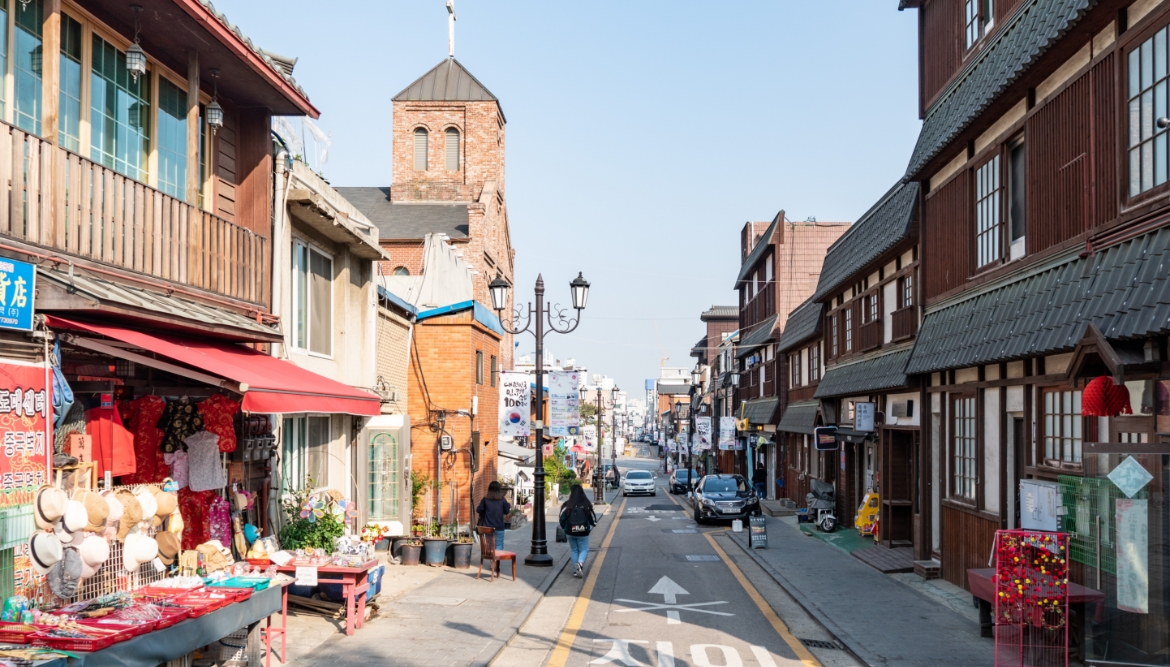
No matter where you travel, it’s always fun to be able to experience the history and culture of the place. Korea has a long history, so there are many things to see, dating from the prehistoric era up to modern times. There are also experience centers, where you can see traditional Korean houses or try on traditional clothing. Additionally, the Incheon City Tour Bus operates around the Open Port area, so you can use it during your travels. Now, here are the best places in Incheon where you can feel the history and culture of Korea.
Recommended Travel Sites
Ancient Sites and Modern History
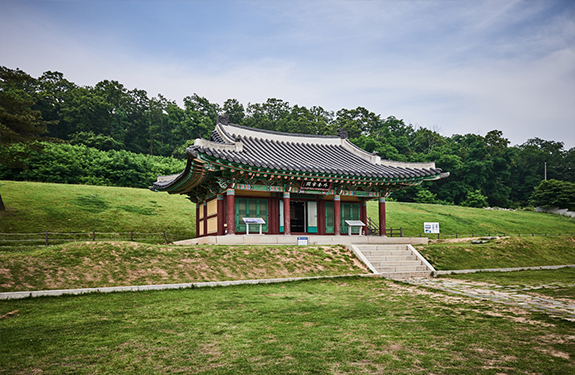
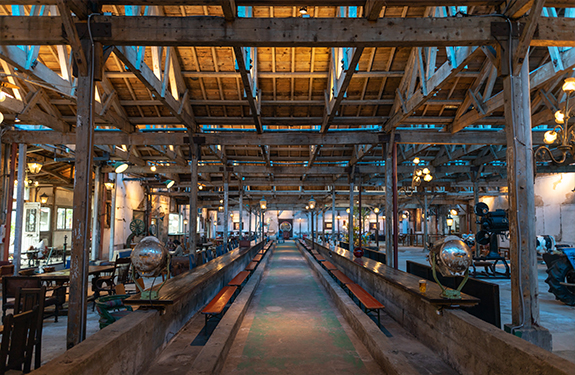
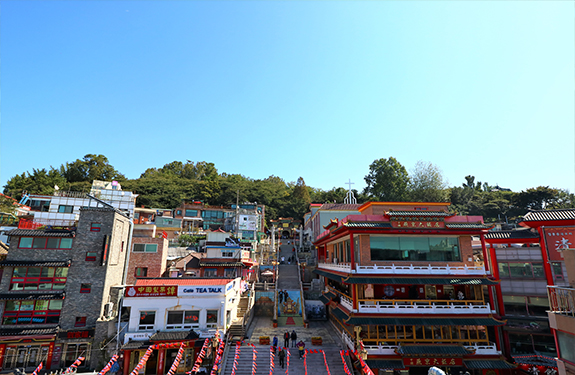
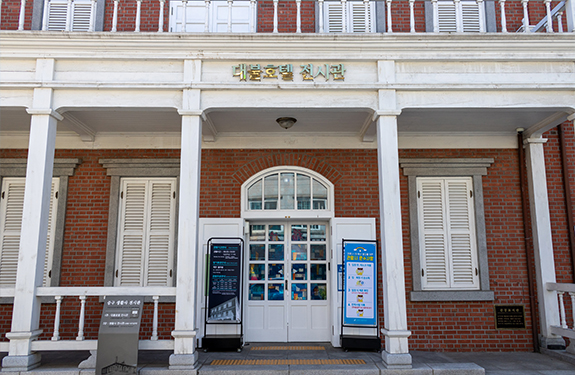
Ganghwa-gun has many places where you can see and experience the history of Incheon. You can encounter many ancient relics, such as prehistoric dolmen, Bugeun-ri Jiseokmyo, and the Goryeo Palace, where the Goryeo Dynasty stayed for 39 years to fight against Mongolia. The Ganghwa Island History Museum showcases the history of the island, spanning from modern periods back to prehistoric times. If you’d like to spend some time experiencing the culture of Ganghwa Island, we recommend visiting the Sochang Experience Center and Joyang Bangjik. Sochang is a natural plant that used to be utilized as baby diapers. While the crop did once enjoy a production boom, there are currently only about 10 sochang factories left to maintain its reputation. The Sochang Experience Center currently acts as a diverse living and cultural experience space—but, originally built in 1938, it used to be a hanok that housed a fabric dying factory, until 2016, when it was remodeled into the center that stands today. After visiting the Sochang Experience Center, you can stop by Joyang Bangjik, a nearby cafe. Joyang Bangjik used to be a textile factory, but has now been remodeled into a cafe. However, you can still feel the essence of the factory in the cafe, such as through the long textile machine work benches that are now used as tables.
Jung-gu is a special part of Incheon that still retains the history from the opening of the port. Since the opening of the port in 1883, Chinatown has been the area that Incheon’s Chinese residents would settle to live together. There, you can get a glimpse of their culture through places like Uiseondang and the Samgukji Mural Street. Incheon’s Chinatown is also the birthplace of jjajangmyeon, Korea’s highly popular black bean noodle dish. We recommend that you try the dish for yourself, as well as visit the Jjajangmyeon Museum, which is housed in the renovated Gonghwachun building where the noodle dish was first made and sold. There is also an attraction where you can see the aspects of modern culture that have taken form in the open port area. The Daebul Hotel Jung-gu Living Exhibition Hall showcases the history of Daebul Hotel, Korea’s first western-style hotel, as well as the lifestyle of Jung-gu residents during the time of the port opening. The Incheon Open Port Modern Architecture Exhibition Hall displays models of the layout and appearance of Incheon during the opening of the port, allowing visitors to get a glimpse at modern buildings that still exist, as well as the ones that have been lost to the hands of time.
※ Recommendations: (Ganghwa-gun) Goryeo Palace, Ganghwa Anglican Church, Yongheunggung Palace,
Sochang Experience Center, Joyangbangjik, Dolmen, Bugeun-ri Jiseok Tomb, Ganghwa History Museum,
Ganghwa Natural History Museum / (Jung-gu) Chinatown, Jjajangmyeon Museum,
Uiseondang, Samgukji Mural Street, Cheongil Jogyeji Gyeonggye Staircase, Daebul Hotel, Living Exhibition Hall,
Incheon Open Port Modern Architecture Exhibition Hall, Incheon Open Port Museum, Incheon Art Platform,
Jemulpo Club, Jayu Park, Hongyemun, Incheon Naedong Church, Dapdong Cathedral
Jung-gu is a special part of Incheon that still retains the history from the opening of the port. Since the opening of the port in 1883, Chinatown has been the area that Incheon’s Chinese residents would settle to live together. There, you can get a glimpse of their culture through places like Uiseondang and the Samgukji Mural Street. Incheon’s Chinatown is also the birthplace of jjajangmyeon, Korea’s highly popular black bean noodle dish. We recommend that you try the dish for yourself, as well as visit the Jjajangmyeon Museum, which is housed in the renovated Gonghwachun building where the noodle dish was first made and sold. There is also an attraction where you can see the aspects of modern culture that have taken form in the open port area. The Daebul Hotel Jung-gu Living Exhibition Hall showcases the history of Daebul Hotel, Korea’s first western-style hotel, as well as the lifestyle of Jung-gu residents during the time of the port opening. The Incheon Open Port Modern Architecture Exhibition Hall displays models of the layout and appearance of Incheon during the opening of the port, allowing visitors to get a glimpse at modern buildings that still exist, as well as the ones that have been lost to the hands of time.
※ Recommendations: (Ganghwa-gun) Goryeo Palace, Ganghwa Anglican Church, Yongheunggung Palace,
Sochang Experience Center, Joyangbangjik, Dolmen, Bugeun-ri Jiseok Tomb, Ganghwa History Museum,
Ganghwa Natural History Museum / (Jung-gu) Chinatown, Jjajangmyeon Museum,
Uiseondang, Samgukji Mural Street, Cheongil Jogyeji Gyeonggye Staircase, Daebul Hotel, Living Exhibition Hall,
Incheon Open Port Modern Architecture Exhibition Hall, Incheon Open Port Museum, Incheon Art Platform,
Jemulpo Club, Jayu Park, Hongyemun, Incheon Naedong Church, Dapdong Cathedral
Activities
Warm indoor displays of Incheon’s History & Culture
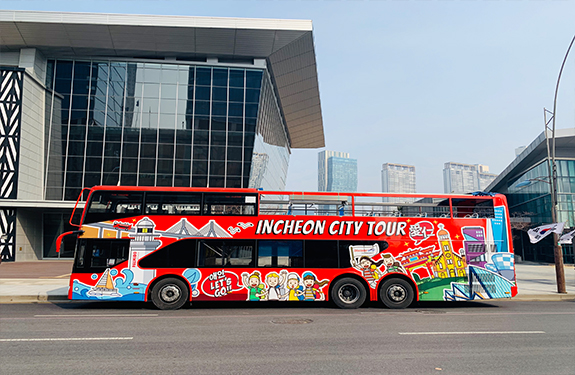
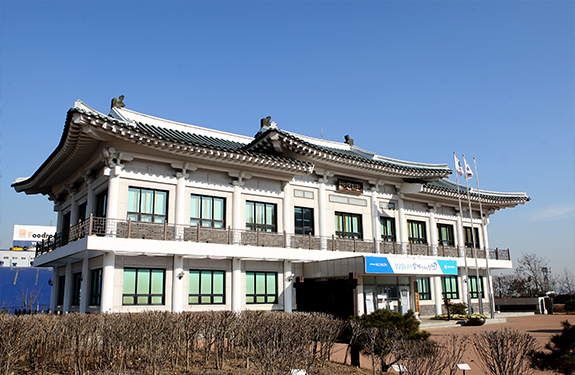
When taking a trip, figuring out how to get from one place to another is a common worry. If you make good use of the Incheon City Tour, which operates a variety of themed tours and courses, you’ll be able to easily and conveniently navigate the city. If you’re headed to Ganghwa-gun, we recommend using Incheon City Tour’s Ganghwa History Tour. This is a tour through which you’ll be able to experience the history of Ganghwa Island, from its Ganghwa Peace Observatory to Oegyujanggak Archives, a royal library from the Jeoseon Dynasty period. And if you’d like to see more of Ganghwa-gun, the Incheon City Tour is a tour bus that circles between Songdo and the Incheon Open Port, allowing you to see Incheon’s present innovations and past relics.
Wolmi Park is a landscape where the forest and the sea come together in harmony. There, you can trek through the traditional Korean gardens, and be put to ease by the well-preserved nature site. Additionally, the Wolmi Cultural Center allows visitors to see and experience traditional Korean culture. You’ll be able to have a look at the type of food and costumes used by the kings of the Joseon Dynasty through displays in the Royal Court’s Cultural Exhibition Room, and get a glimpse of Korea’s traditional wedding culture in the Traditional Living Culture Exhibition Room. Finally, if you’d like to end your day enjoying performances and fireworks over the sea, we recommend riding the Wolmi Island Cruise Ship.
※ Recommendations: (Ganghwa-gun) Incheon City Tour’s Ganghwa History Tour, Ganghwa Tour Platform /
(Jun-gu) Incheon City Tour Open Port route, Wolmi Cultural Center, Wolmi Park, Wolmi Island Cruise
Wolmi Park is a landscape where the forest and the sea come together in harmony. There, you can trek through the traditional Korean gardens, and be put to ease by the well-preserved nature site. Additionally, the Wolmi Cultural Center allows visitors to see and experience traditional Korean culture. You’ll be able to have a look at the type of food and costumes used by the kings of the Joseon Dynasty through displays in the Royal Court’s Cultural Exhibition Room, and get a glimpse of Korea’s traditional wedding culture in the Traditional Living Culture Exhibition Room. Finally, if you’d like to end your day enjoying performances and fireworks over the sea, we recommend riding the Wolmi Island Cruise Ship.
※ Recommendations: (Ganghwa-gun) Incheon City Tour’s Ganghwa History Tour, Ganghwa Tour Platform /
(Jun-gu) Incheon City Tour Open Port route, Wolmi Cultural Center, Wolmi Park, Wolmi Island Cruise
Accommodation
A meaningful overnight stay in a place filled with the history of Incheon
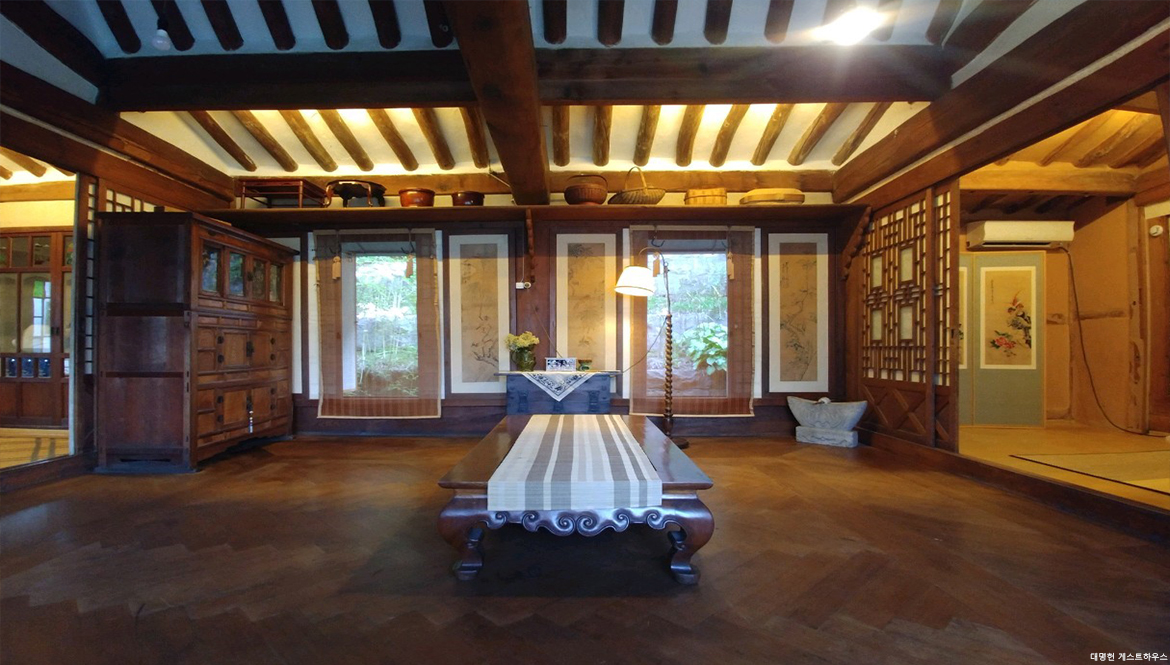
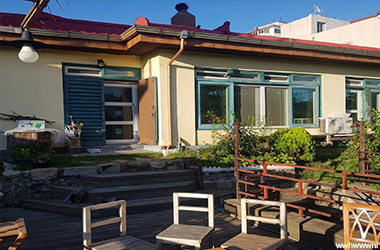
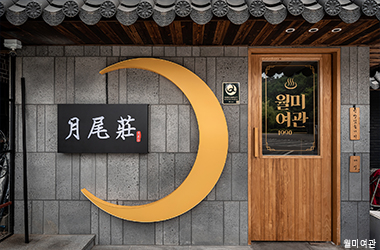
Daemyeongheon Guesthouse is the place where Korea’s most respected independence activist Kim Gu (also known by his pen name Baek Beom) stayed. While living there he held meetings with independence fighters and taught Korean to children. When you visit the Daemyeongheon Guesthouse, you will have the opportunity to hear the explanation of the relationship between Kim Gu and the house, as well as see photos of Kim Gu at the house.
Sangwoojae is another guesthouse located near the Incheon Open Port. Since its construction in the 1930s, Japanese, American and Korean people have alternately lived there, and all have left behind remnants of each country’s characteristics in the house. And during renovations, an old military map kept on the ceiling was discovered by accident. The porch, hallways, and staircase however are just as they were when the house was first built. For a more upscale option, Hotel Wolmi Inn is a hotel built in the style of a traditional Korean home (hanok), with the lobby and guest rooms all decorated with exquisite traditional Korean artifacts.
※ Recommendations: (Ganghwa-gun) Daemyeonheon Guesthouse / (Jung-gu) Sangwoojae, Hotel Wolmi Inn
Sangwoojae is another guesthouse located near the Incheon Open Port. Since its construction in the 1930s, Japanese, American and Korean people have alternately lived there, and all have left behind remnants of each country’s characteristics in the house. And during renovations, an old military map kept on the ceiling was discovered by accident. The porch, hallways, and staircase however are just as they were when the house was first built. For a more upscale option, Hotel Wolmi Inn is a hotel built in the style of a traditional Korean home (hanok), with the lobby and guest rooms all decorated with exquisite traditional Korean artifacts.
※ Recommendations: (Ganghwa-gun) Daemyeonheon Guesthouse / (Jung-gu) Sangwoojae, Hotel Wolmi Inn
Food
Restaurants representing Incheon across time
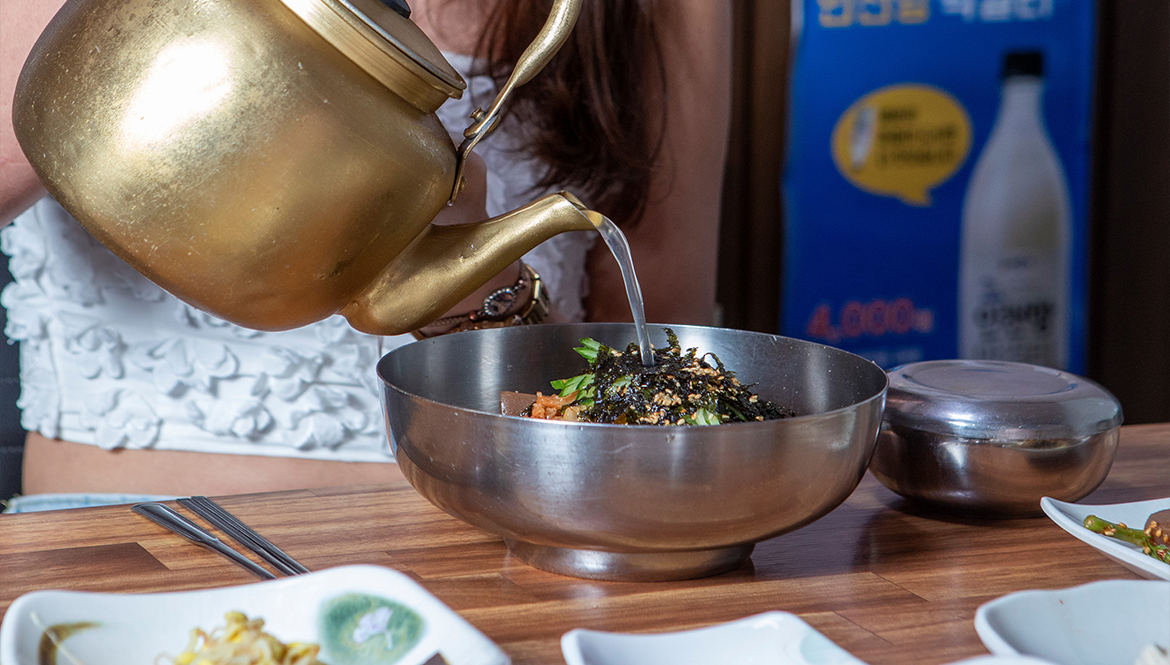
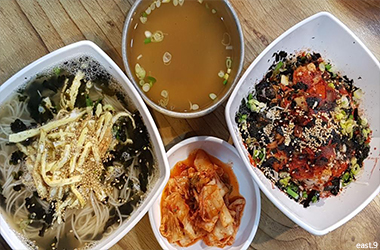
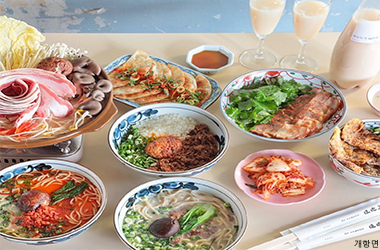
Wangjajeong Mukbap is a famous restaurant in Ganghwa-gun that sells food made from muk, a jelly-like food. The featured menu dish is mukbap, which mixes muk with a variety of vegetables and spices. They are also famous for their Jeotguk Galbi, which is made with pork ribs, cabbage, tofu, and pumpkin seasoned with salted shrimp from Ganghwa Island.
Noodles are one of the most beloved foods among Koreans. Ganghwa Noodles is a second-generation noodle restaurant, and has been exclusively cooking noodles for more than 60 years. The quantity and quality of their food is sure not to disappoint.
Iseul-Og is a restaurant near the Port of Incheon, operating out of a remodeled house that is over 100 years old. There you can taste various seafood-based dishes, such as clam soup, clam pancake, spicy clam ramen, and so on. Gaehangmyeon is a hot noodle restaurant that has been in operation since 1972, inside of a remodeled office building. Their hot noodles are cooked using noodles from Gwangshin Jaemyeonso, the birthplace of jjolmyeon (a spicy chewy cold-noodle dish). A bowl of their hot, chewy noodles easily melts away the frigidness of your winter travels.
※ Recommendations: (Ganghwa-gun) Wangjajeong Mukbap, Ganghwa Noodles \ (Jung-gu) Iseul-Og, Gaehangmyeon
Noodles are one of the most beloved foods among Koreans. Ganghwa Noodles is a second-generation noodle restaurant, and has been exclusively cooking noodles for more than 60 years. The quantity and quality of their food is sure not to disappoint.
Iseul-Og is a restaurant near the Port of Incheon, operating out of a remodeled house that is over 100 years old. There you can taste various seafood-based dishes, such as clam soup, clam pancake, spicy clam ramen, and so on. Gaehangmyeon is a hot noodle restaurant that has been in operation since 1972, inside of a remodeled office building. Their hot noodles are cooked using noodles from Gwangshin Jaemyeonso, the birthplace of jjolmyeon (a spicy chewy cold-noodle dish). A bowl of their hot, chewy noodles easily melts away the frigidness of your winter travels.
※ Recommendations: (Ganghwa-gun) Wangjajeong Mukbap, Ganghwa Noodles \ (Jung-gu) Iseul-Og, Gaehangmyeon
Shopping & Nightlife
From Incheon’s first permanent market to the youth-run shopping malls
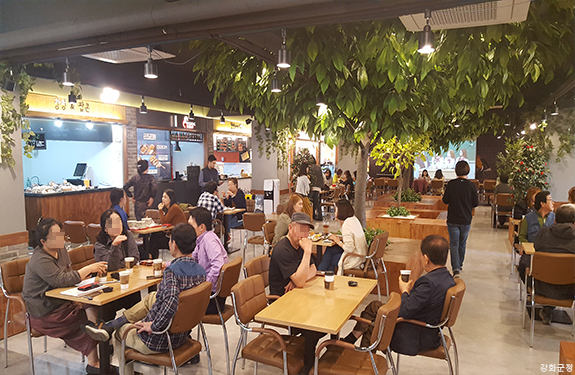
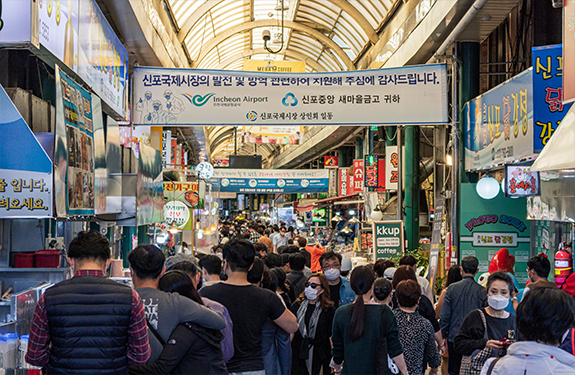
Browsing a market is one of the exciting outings during a trip that should not be missed. Here are some of the markets in Ganghwa-gun and Jung-gu where you can feel the real charm of Incheon.
We recommend visiting Youth Mall Gaebyeok 2333 in the Ganghwa Jungang Market, where young people have gathered and started their own businesses. The number ‘2333’ in the name refers to the year 2333 BC, when Gojoseon, the first country on the Korean Peninsula, was founded. The area is home to many restaurants, clothing and accessory shops, workshops, cafes, as well as a tourist information center, VR experience rooms, and even a small concert hall.
Sinpo International Market, located in Jung-gu’s Sinpo-dong, is Incheon’s first permanent modern market, coming about around 130 years ago. Sinpo DakGangjeong is so famous for their sweet and sour chicken, that you’ll be digging into it while you’re waiting in line. Sinpo Underground Shopping Center is also a must-visit, where you can buy various of your daily-life necessities at low prices. And the Sinpo-dong Cultural Street is a great site for a day trip, with its many restaurants, shopping areas and themed (jazz, vintage, etc.) cafes.
※ Recommendations: (Ganghwa-gun) Ganghwa Jungang Market Youth Mall Gaebyeok 2333 /
(Jung-gu) Sinpo International Market, Sinpo Underground Shopping Center, Sinpo-dong Cultural Street
We recommend visiting Youth Mall Gaebyeok 2333 in the Ganghwa Jungang Market, where young people have gathered and started their own businesses. The number ‘2333’ in the name refers to the year 2333 BC, when Gojoseon, the first country on the Korean Peninsula, was founded. The area is home to many restaurants, clothing and accessory shops, workshops, cafes, as well as a tourist information center, VR experience rooms, and even a small concert hall.
Sinpo International Market, located in Jung-gu’s Sinpo-dong, is Incheon’s first permanent modern market, coming about around 130 years ago. Sinpo DakGangjeong is so famous for their sweet and sour chicken, that you’ll be digging into it while you’re waiting in line. Sinpo Underground Shopping Center is also a must-visit, where you can buy various of your daily-life necessities at low prices. And the Sinpo-dong Cultural Street is a great site for a day trip, with its many restaurants, shopping areas and themed (jazz, vintage, etc.) cafes.
※ Recommendations: (Ganghwa-gun) Ganghwa Jungang Market Youth Mall Gaebyeok 2333 /
(Jung-gu) Sinpo International Market, Sinpo Underground Shopping Center, Sinpo-dong Cultural Street
- #family
- #friends
- #parents
- #couple
- #children
- #solo
- #fourseason
- #openportarea
- #museum
- #incheoncitytourbus
- #goryeopalace
- #ganghwaanglicanchurch
- #yongheunggungpalace
- #sochangexperiencecenter
- #joyangbangjik
- #dolmenbugeunrijiseoktomb
- #ganghwahistory
- #museum
- #ganghwanaturalhistorymuseum
- #chinatown
- #jjajangmyeonmuseum
- #samgukjimuralstreet
- #cheongiljogyejigyeonggyestaircase
- #daebulhotel
- #livingexhibitionhall
- #incheonopenport
- #modernarchitectureexhibition
- #hall
- #incheonopenportmuseum
- #incheonartplatform
- #jemulpoclub
- #jayupark
- #hongyemun
- #incheonnaedongchurch
- #dapdongcathedral
- #daemyeonheonguesthouse
- #sangwoojae
- #hotelwolmiinn
- #wangjajeongmukbap
- #ganghwanoodles
- #iseulog
- #gaehangmyeon
- #ganghwajungangmarket
- #youthmallgaebyeok2333
- #sinpointernational
- #market
- #sinpoundergroundshoppingcenter
- #sinpodongculturalstreet









